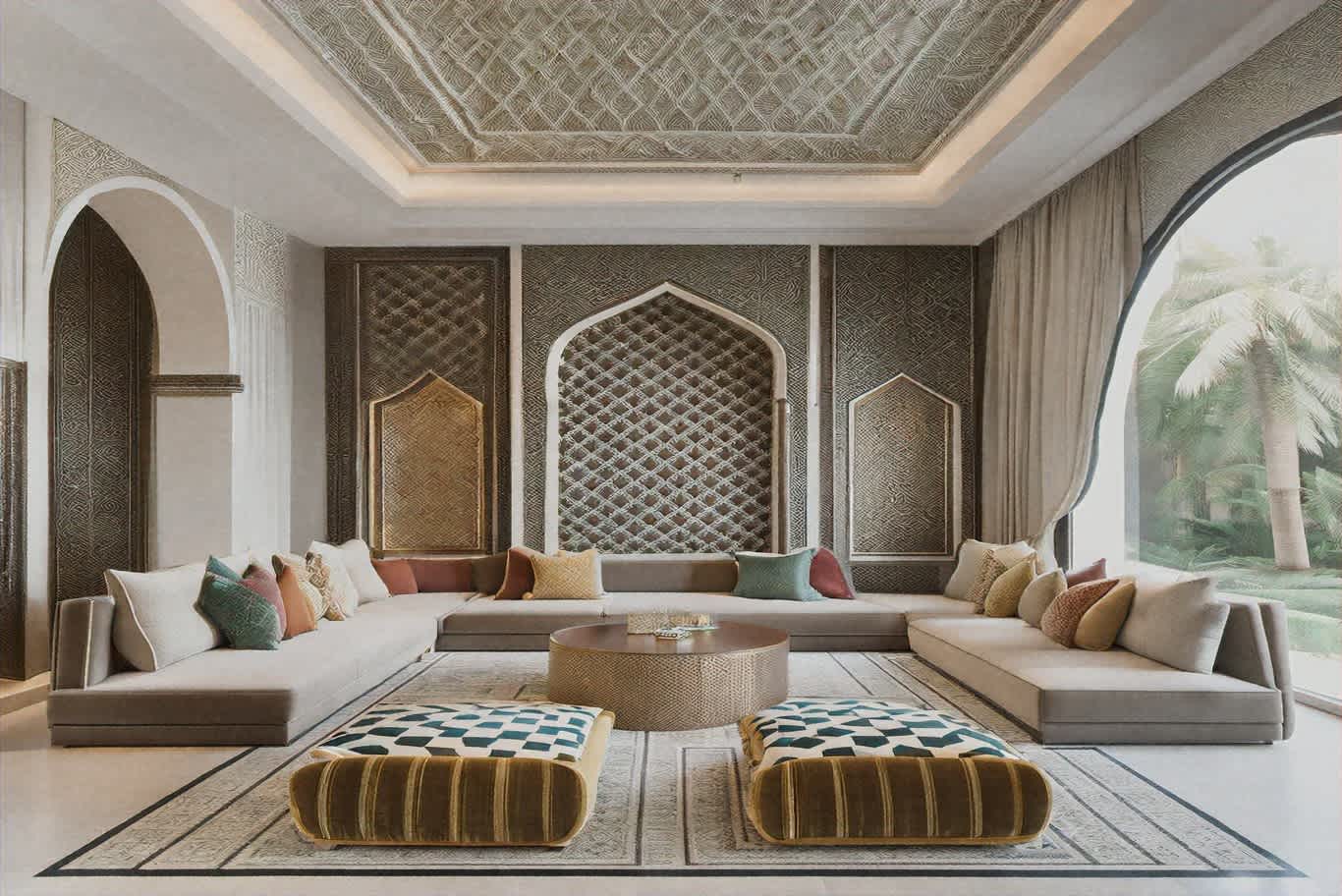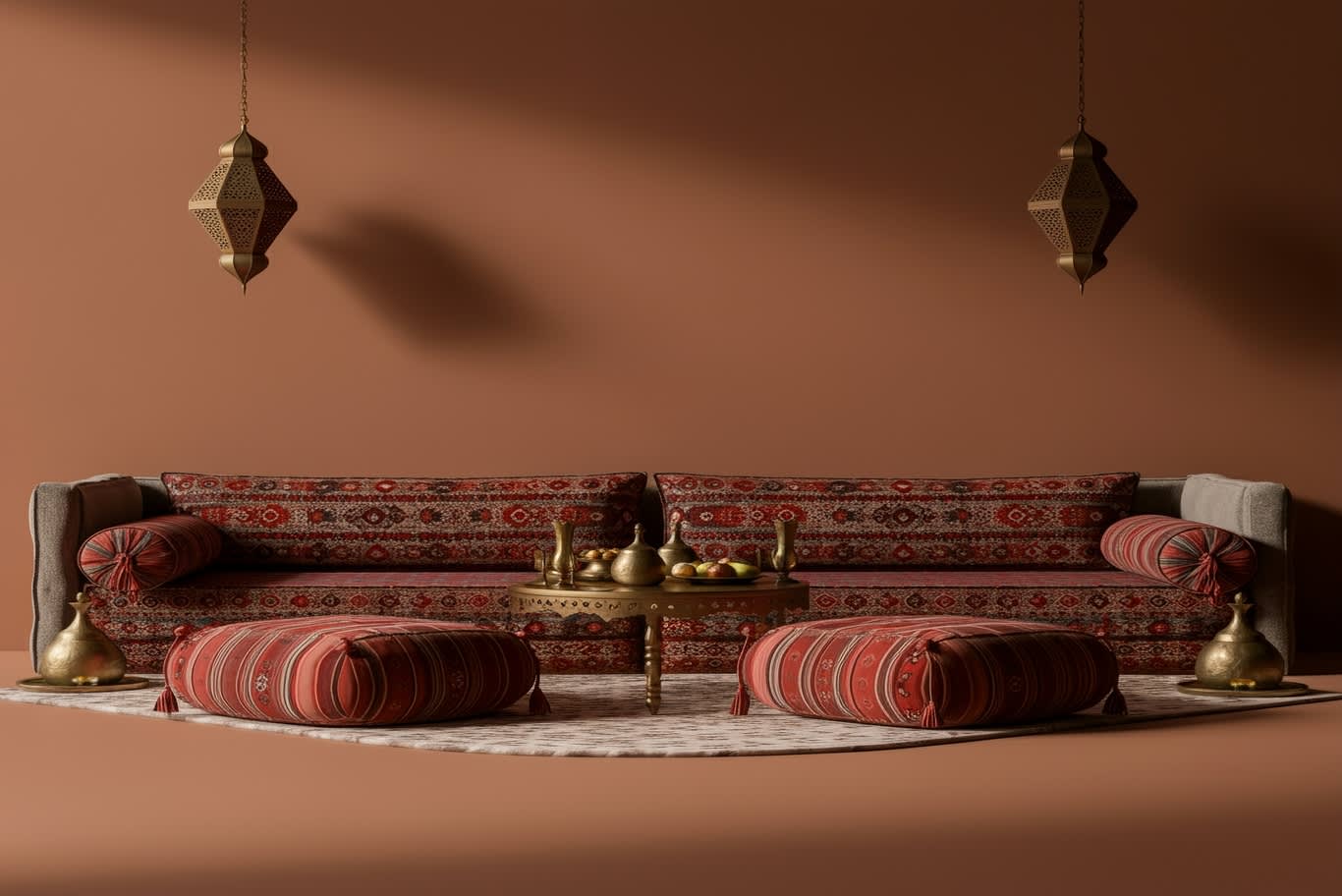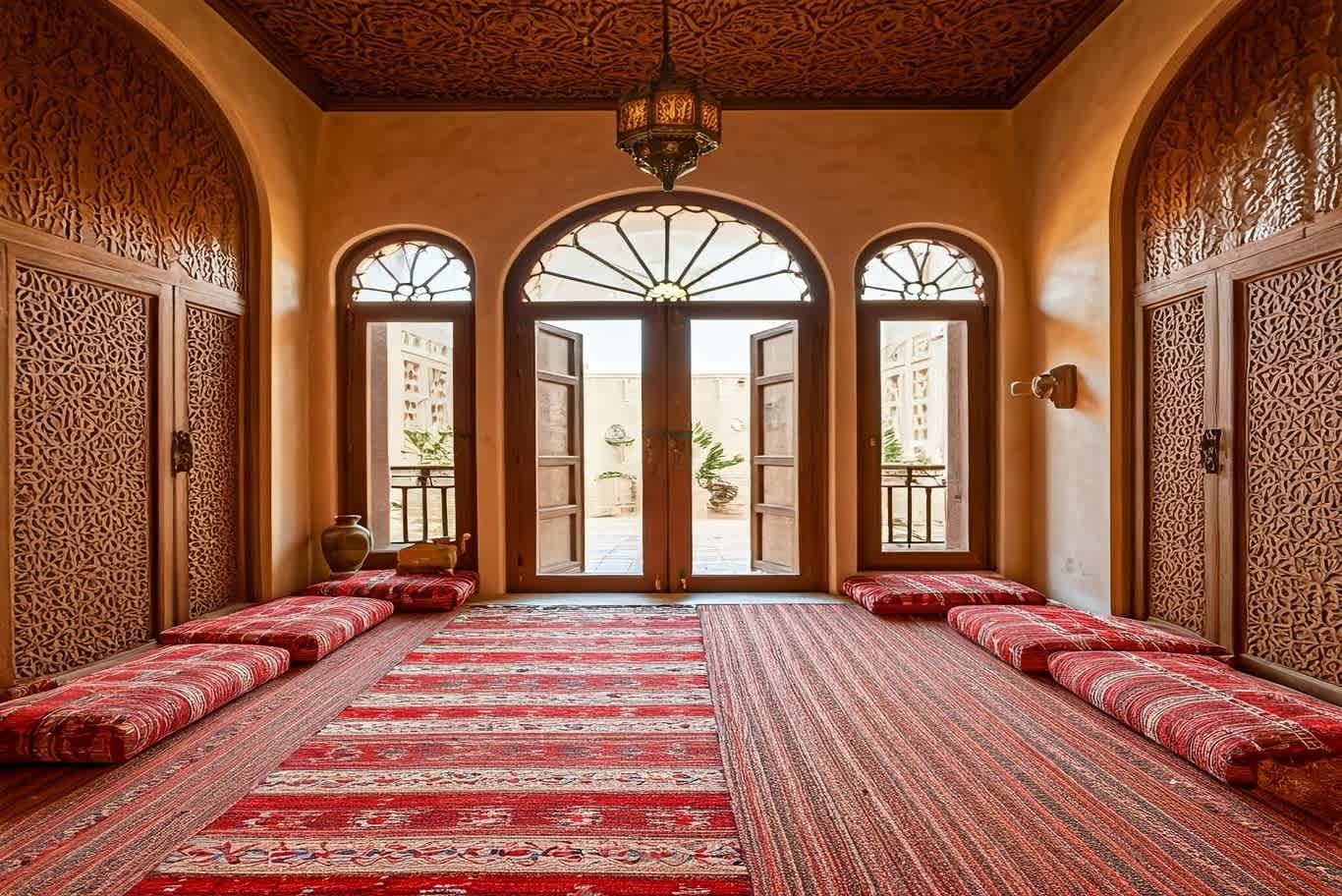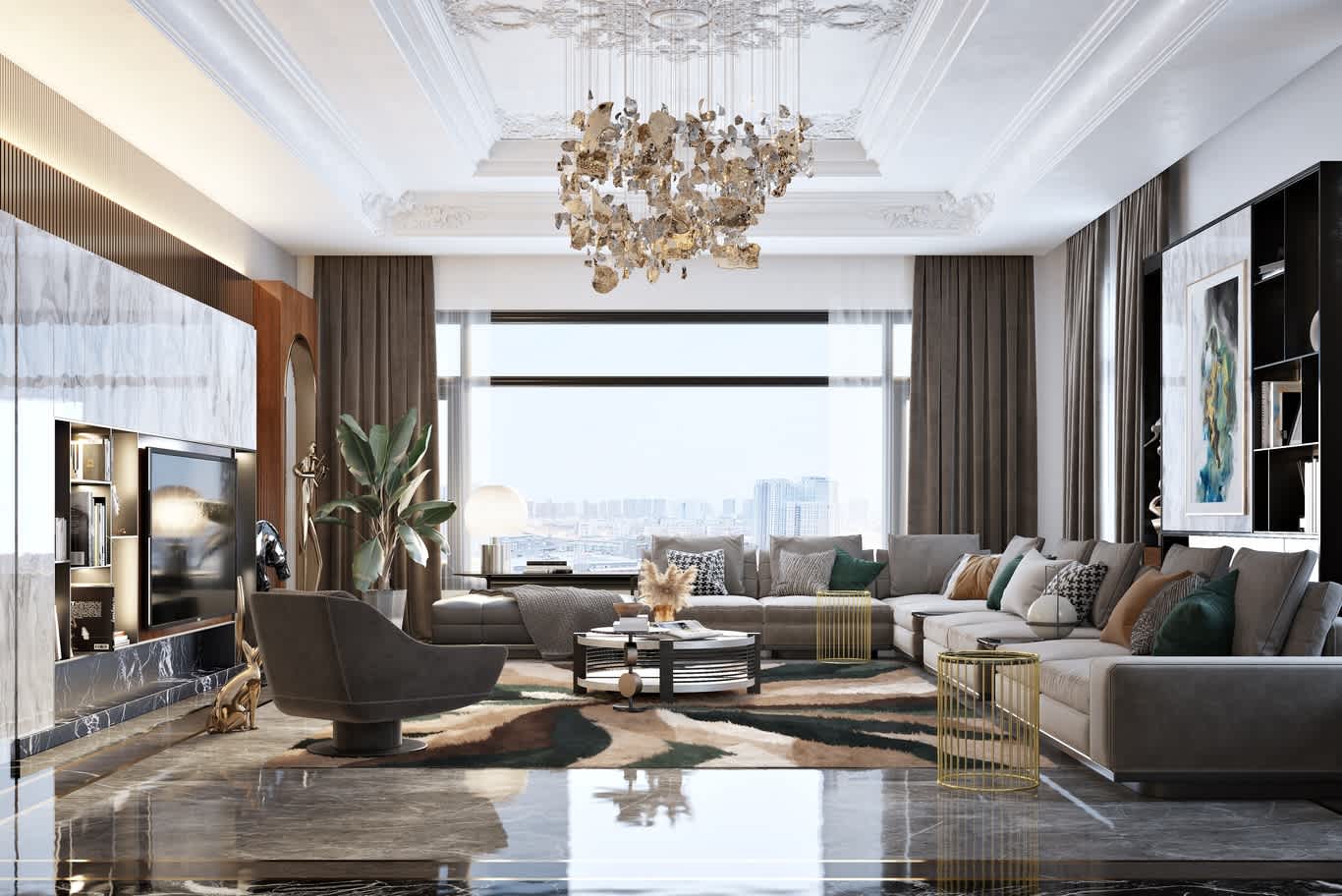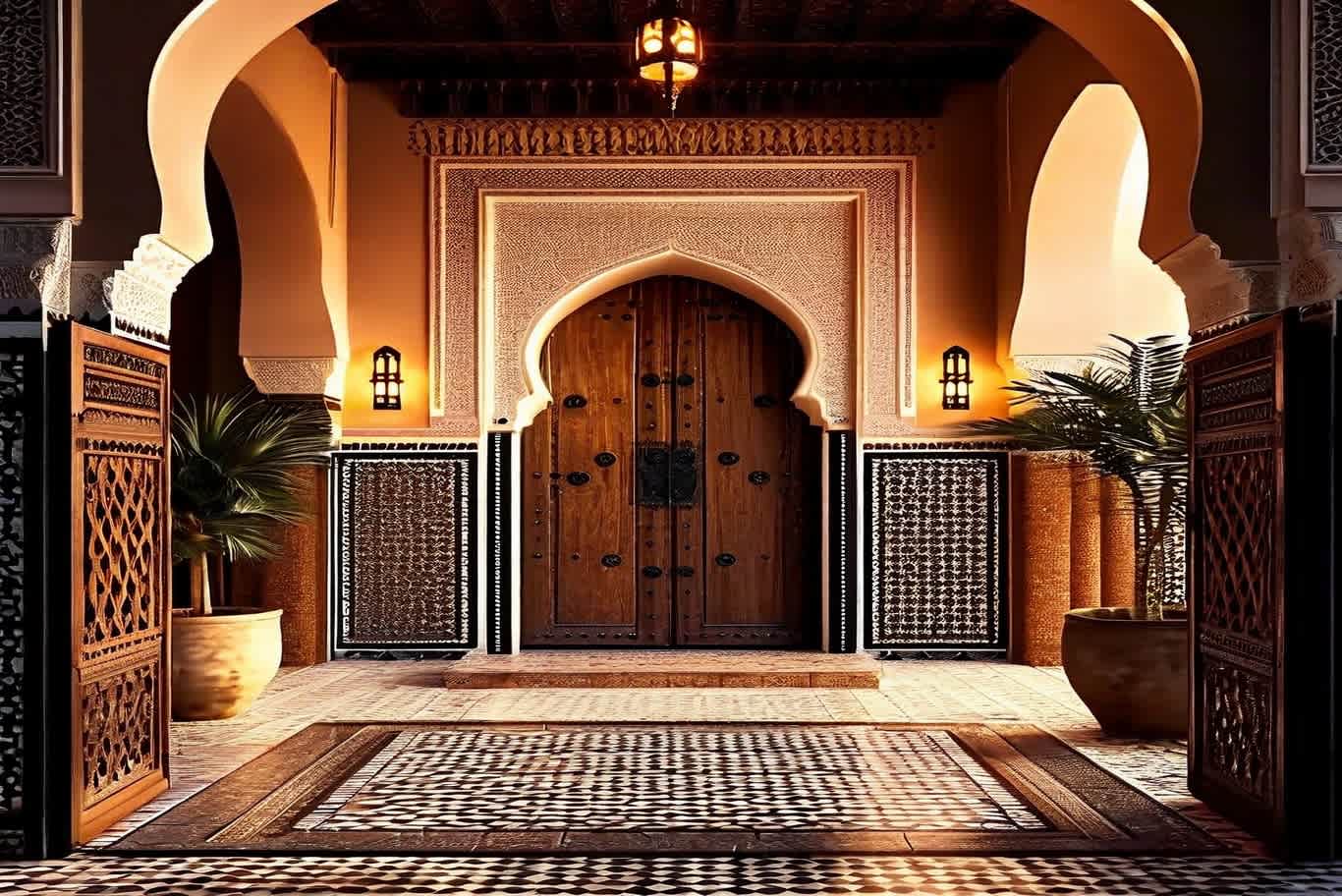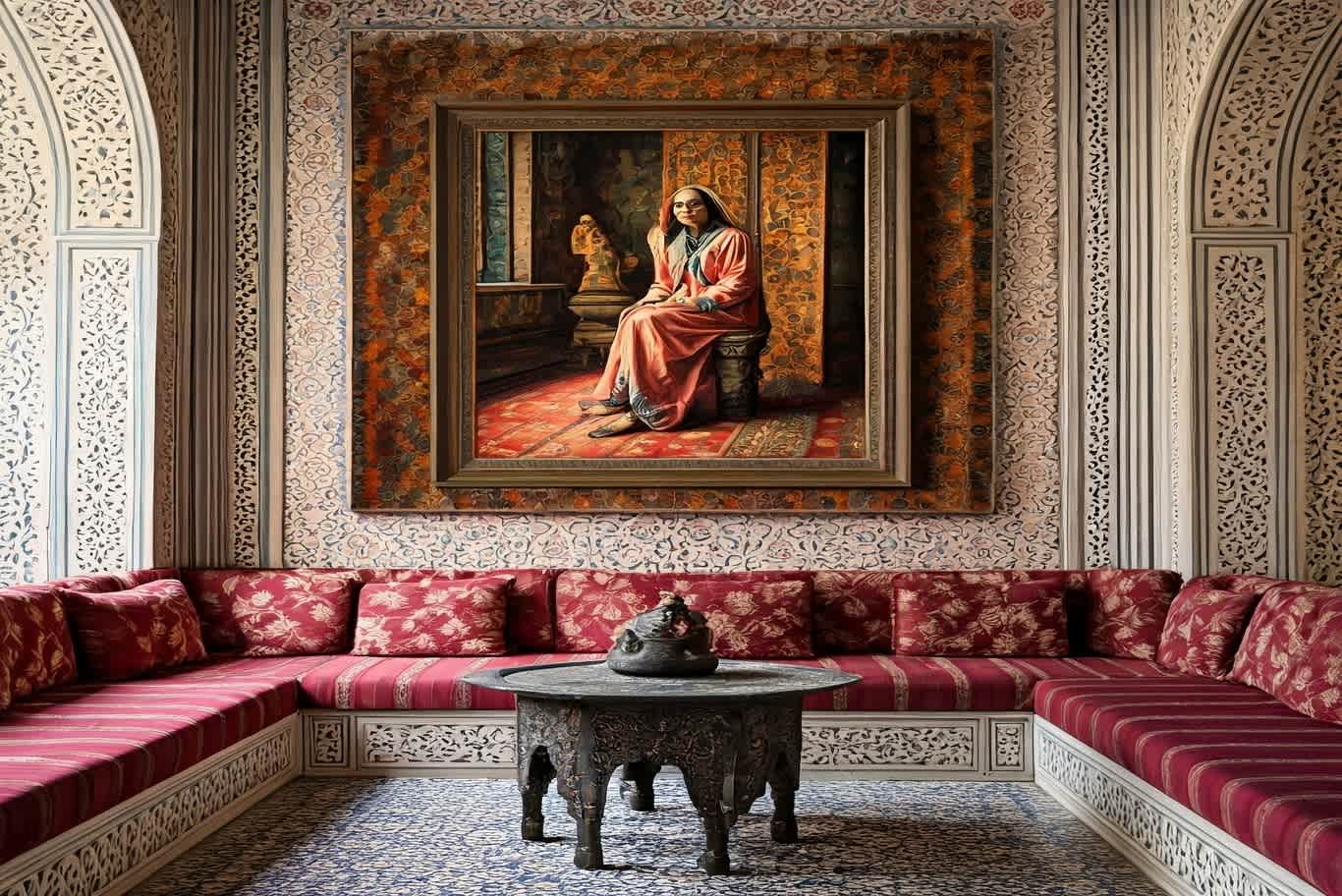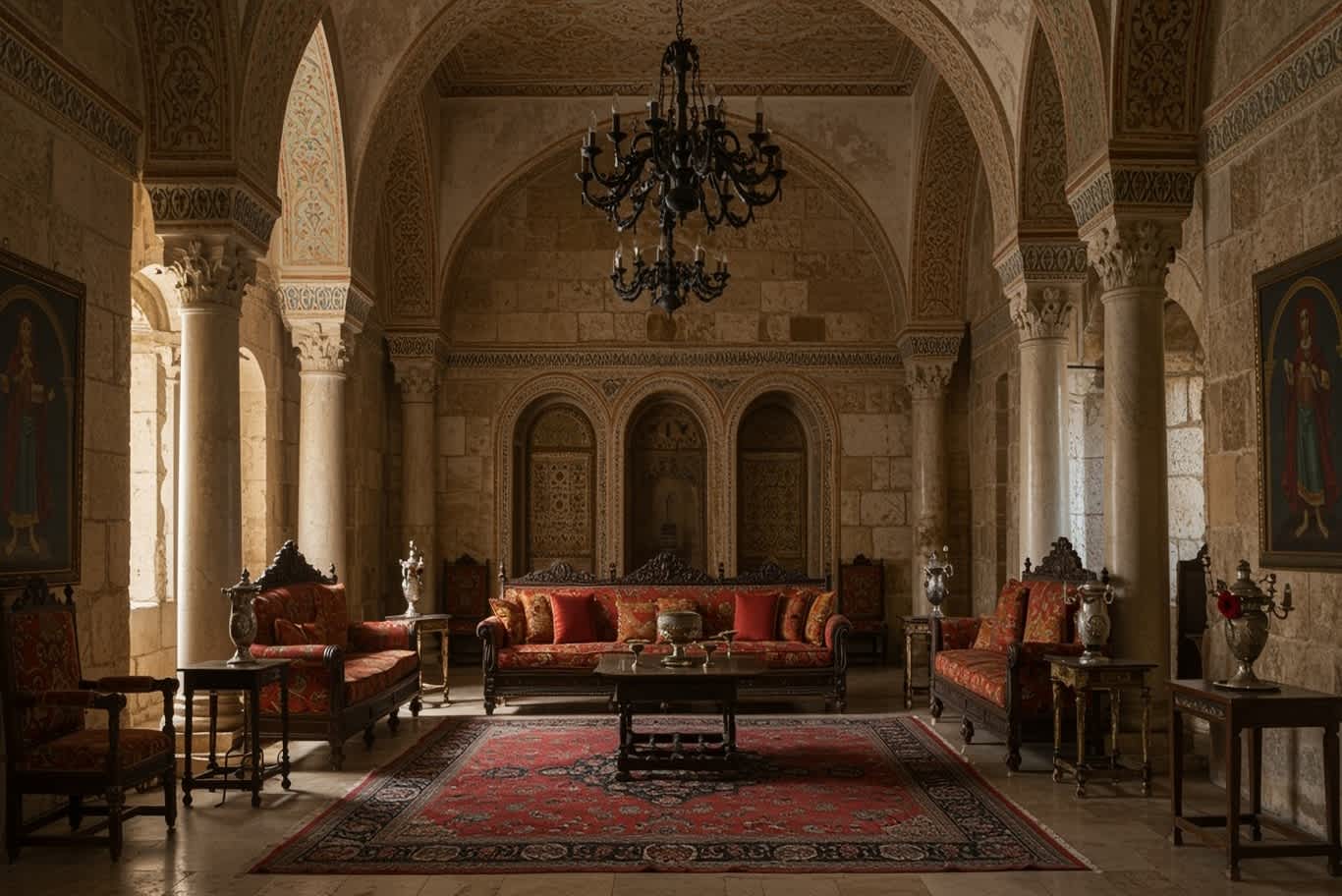Home Page | Blog | Moroccan Decoration in Home Décor Explained
Moroccan Decoration in Home Décor Explained
8/4/2025
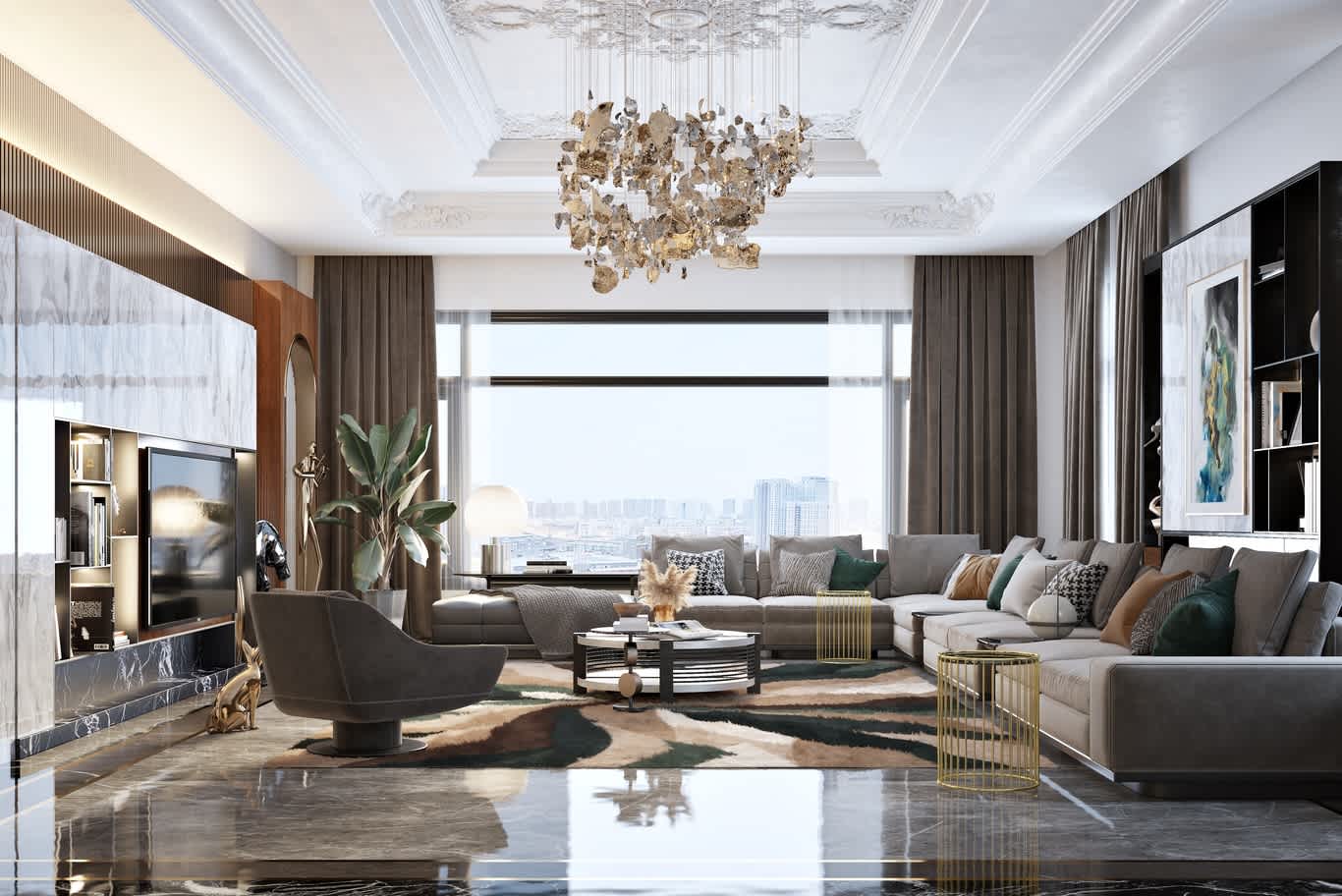
Moroccan décor carries a legacy that blends cultural depth, architectural richness, and visual variety. Originating from centuries-old Berber, Arab, and Mediterranean influences, this aesthetic represents a harmonious balance of design traditions. It offers a cohesion through geometric repetition, vibrant color combinations, and natural materials. Unlike fleeting trends, Moroccan décor holds a timeless place in the world of interiors.
This blog explains Moroccan décor’s distinctive traits and how it can be thoughtfully integrated into residential spaces. Every section highlights the decorative elements that define this style and why it continues to appeal globally.
1. Colors and Textures in Moroccan Décor
A. Use of Bold Colors
Traditional Moroccan interiors are rich in color. Deep reds, saturated blues, burnt orange, and emerald greens reflect both natural landscapes and royal heritage. These tones evoke a layered and immersive atmosphere in any room.
B. Natural and Tactile Finishes
Walls and floors in Moroccan homes often carry a tactile surface. Tadelakt—a lime-based plaster—offers a soft matte appearance with a touch of luxury. Terracotta, unpolished stone, and brass are regularly found throughout Moroccan spaces, lending a grounded character to the environment.
2. Patterns and Geometry
A. Zellige Tiles
Zellige is a mosaic tilework technique made of hand-cut glazed terracotta tiles. These intricate designs feature geometric motifs arranged with mathematical precision. They appear on fountains, walls, and tabletops, creating rhythm and visual intrigue.
B. Carved Wood and Stucco
Arabesque carvings are an important part of Moroccan spaces. Decorative plasterwork and hand-carved cedarwood bring artistic dimension. These carvings range from repetitive floral shapes to arabesques filled with interlaced curves and symmetry.
For more on Arabesque elements, see Arabesque Design Explained
3. Furniture and Layout
A. Low Seating Arrangements
Traditional Moroccan interiors prioritize floor-level seating. Cushions, poufs, and low sofas form comfortable and social seating areas. The Moroccan Majlis reflects this arrangement, encouraging connection and conversation.
Explore Moroccan Majlis Design Concepts
B. Ornamental Detailing
Furniture often includes delicate inlay work or hand-painted designs. Tables with inlaid mother-of-pearl, bone, or brass offer a decorative surface and historical reference. Cupboards and screens double as both utility and ornament.
4. Lighting in Moroccan Interiors
A. Lanterns and Shadows
Lighting plays an expressive role in Moroccan interiors. Pendant lanterns made of pierced metal or stained glass create dappled patterns on surrounding surfaces. These pieces serve as both light sources and sculptural features.
B. Layered Lighting Approach
Rooms often combine several light sources. Wall sconces, table lamps, and overhead pendants provide varying intensities. This layered method promotes a warm, ambient tone, especially when paired with richly colored surfaces.
5. Textiles and Rugs
A. Traditional Moroccan Rugs
Handwoven rugs such as Beni Ourain or Azilal rugs feature distinct tribal motifs and abstract patterns. These pieces often use a neutral base with occasional bursts of color, allowing them to blend seamlessly with both classic and modern interiors.
B. Fabric and Drapery
Textiles are essential in Moroccan design. Heavy curtains, embroidered cushions, and decorative throws introduce softness and depth. Materials like silk, cotton, and wool are frequently used, sometimes layered for texture and richness.
6. Architectural Influences
A. Arches and Doorways
Horseshoe and keyhole arches are emblematic of Moroccan architecture. These arches soften rigid room layouts and add movement. Their decorative edges often feature tile or plaster ornamentation, serving as a visual link between spaces.
B. Courtyards and Indoor Gardens
In traditional Moroccan homes, central courtyards provide natural ventilation and light. These spaces often include a fountain or garden, fostering tranquility. Even in modern interpretations, integrating greenery or an interior patio echoes this layout.
7. Decorative Accents
A. Mirrors and Metal Work
Ornate mirrors framed in brass or silver leaf reflect light and add dimension. Decorative trays, teapots, and lidded boxes made of engraved metal are commonly displayed on tables or shelves.
B. Pottery and Ceramics
Colorful ceramics showcase regional artistry. These items, often hand-painted, include bowls, vases, and tagines. Each piece contributes individuality and charm while serving a functional or decorative purpose.
8. Blending Moroccan Elements into Modern Interiors
A. Balanced Use of Features
Introducing Moroccan pieces into contemporary settings requires thoughtful placement. A carved screen might define a reading nook, while Zellige tiles can frame a fireplace or backsplash.
B. Neutral Foundation with Accents
Using a neutral base—white, cream, or gray—creates contrast for colorful Moroccan accessories. A white wall may enhance the visual strength of an ornate mirror or patterned rug, allowing each piece to breathe within the space.
9. Moroccan Style Across Rooms
A. Living Room
A Moroccan-inspired living area may feature low seating, layered rugs, arched openings, and carved wood. Earthy tones combined with colorful cushions introduce vibrancy while remaining comfortable.
B. Bedroom
Wrought-iron bed frames, patterned linens, and ambient lighting bring intimacy to bedrooms. Wall niches or fabric canopies enhance depth and texture, creating a space that feels secluded and calming.
C. Bathroom and Kitchen
In bathrooms, Tadelakt walls offer moisture resistance and beauty. Zellige tiles make a bold statement in kitchens—used for backsplash areas or even countertops. These materials give functional zones a unique character without overwhelming them.
10. Common Mistakes to Avoid
A. Overuse of Decorative Elements
While Moroccan décor is detail-rich, overloading a space with patterns and colors can feel chaotic. Choosing a few standout features maintains focus and harmony.
B. Mixing Too Many Cultural Styles
Combining Moroccan décor with multiple unrelated styles can dilute its impact. Instead, select complementary aesthetics like Mediterranean, bohemian, or Andalusian design for a smooth blend.
Conclusion
Moroccan design presents a timeless, sophisticated way to introduce culture and character into a home. From vibrant patterns to architectural shapes, it offers opportunities for creative expression across different interiors. Whether designing an entire room or introducing select accents, the Moroccan style leaves a memorable impression.
If you are planning to bring Moroccan charm into your home or looking for professional assistance in curating interiors, feel free to get in touch with our team. Our experts are ready to help guide your design goals into something meaningful.
FREE
CONSUL
TATION
FREE CONSULTATION
TELL US ABOUT YOUR PROJECT
WE WOULD LOVE TO HEAR FROM YOU
Feel free to reach us via this contact form and one of our Design Consultants will get back to you at earliest.
OUR BRANCHES
UAE - DUBAI
+971 52 8111106 | hello@algedra.ae
TURKEY - ISTANBUL
+90 533 701 89 71 | info@algedra.com.tr
Leading Interior Design and Decor Company in Dubai and Abu Dhabi.
Algedra is a reputable, internationally recognized, and one of the most successful interior design companies in Dubai, and Abu Dhabi, which specializes in delivering interior design, architectural, and creative space planning projects throughout GCC, MENA, North Africa, Turkey and Russia.
Algedra is a one-stop solution for all your residential interior design and fit-out needs. We have successfully completed numerous villa interior and exterior design projects, where we integrated quality and originality to deliver interior masterpieces.
ALGEDRA, Interior Design Company in Dubai, is specialized in providing elegant and stunning interior design services for both residential and commercial projects. We turn our clients' dreams into reality, trans- lating their tastes and needs into beautiful and functional spaces.
Since the day we were founded, we have designed and built many branded residences, resorts, hotels, multi-purpose social spaces, and palace designs with different functions and concepts by following the ever-changing design trends over the world.
A key element of our work is a fusion of different cultures and designs, combining Greek, Italian, Eastern and Western influences with British innovation.
As a team of highly qualified interior designers and engineers, Algedra offers complete architectural services from mall design to corporate office design as well as the exterior design of any project based on customers' needs.
Our customers include leading names, we have completed diverse projects in hospitality, landscape, commercial, and residential designs. These projects contain cafes, restaurants, gym, villas, family sitting rooms, bedrooms, kitchens; all showcasing our company's exquisite details and high-end designs.
Residential Interior Design in Dubai
Algedra's interior designers and architects have an important mission: building villas, houses, apartments, condos, and anywhere else where you reside that will fulfill your needs while being structurally safe and sound.
Architectural Designs
There are so many details that go into designing an architectural design project. Every step of the project has been carefully considered for safety and daily comfort by Algedra's experts.
Commercial Design
Conceptualizing spaces for business, to elevate style, and to increase functionality to help enhance the bottom line of a company is vital, as well as employee comfort and interior design too. Our commercial interior designers translate client's concept in ways that are efficient, attractive and provide professional workspaces.
Fit-out Projects
Algedra Interiors delivering high-quality tailored fit-out projects that transform your villas, palaces and commercial spaces.
We're a passionate team of interior designers, architects and engineers. Every day we help clients to solve interior design problems and create engaging spaces!
Wherever you are in Kuwait, Saudi Arabia, Azerbaijan, Qatar, Morocco, Algeria, Tunisia, Libya, Egypt; don't hesitate, contact us to find out more about why we are one of the best interior design companies in Dubai and Abu Dhabi!
